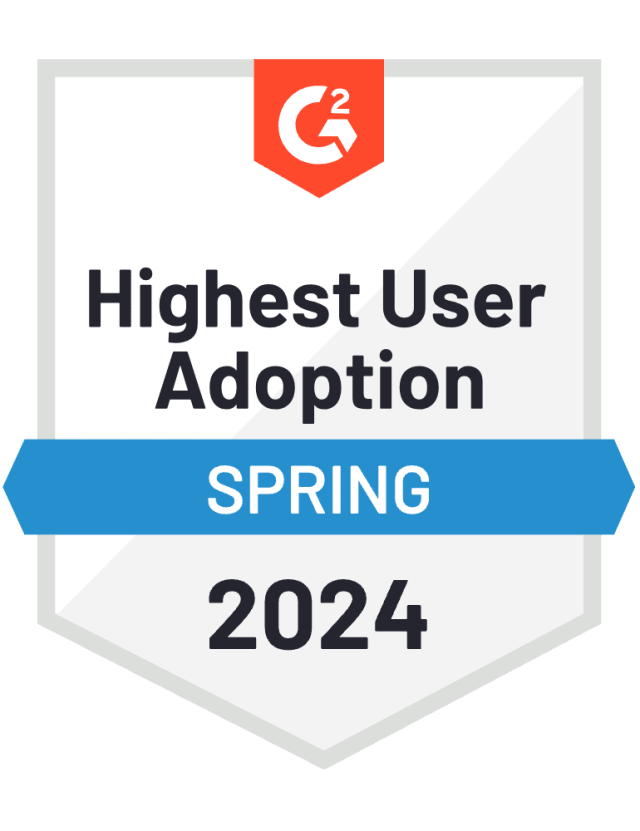With influencer marketing maintaining its position as one of the most effective marketing strategies, it's important for brands to prioritize efficient management of their creator partnerships. "Creator" is a broader term to describe influencers and any user creating content for your brand.
On average, businesses make $6.50 for every dollar invested in influencer marketing, and it's the fastest-growing channel for customer acquisition. However, influencer partnerships only thrive for brands with a well-oiled management strategy.
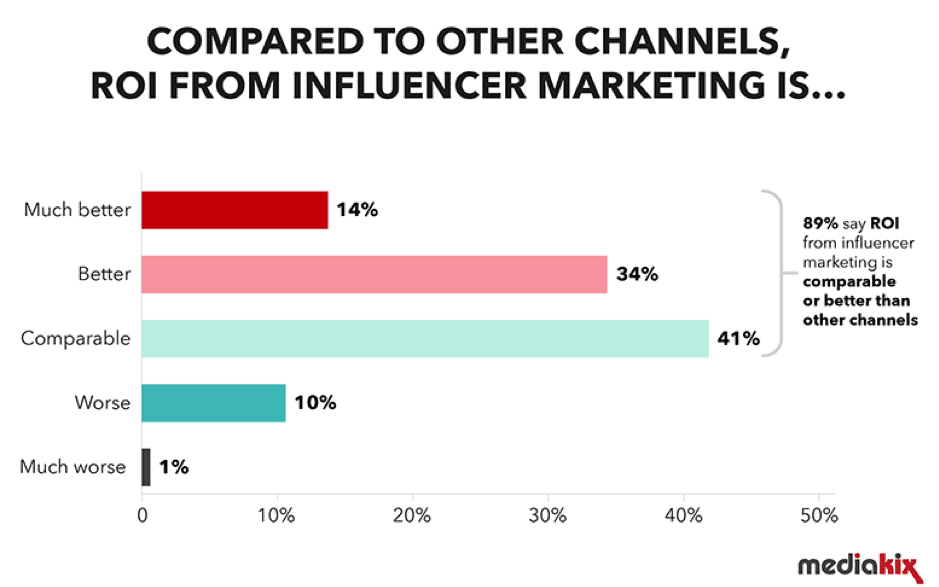
Want to learn how to build a foolproof creator management strategy that's both cost-efficient and mutually beneficial? Let's dive in.
What is creator management?
Creator management is the end-to-end administration of an influencer marketing campaign between a brand and the influencers it is working with. It involves performance management and relationship management to receive maximum output from the campaign.
A secondary goal of influencer management is long-term relationship building. You want to develop a working relationship with influencers who have supported your business to promote greater success and positive sentiment about your brand.
Macro-influencers and micro-influencers
Choosing the right influencer for your marketing campaign is critical. Influencers also come in all shapes and sizes. They also have different skill sets.
Based on number of followers, here are the influencer categories:
Nano-influencers – 1000-10,000
Micro-influencers – 10,000-100,000
Macro Influencers (bigger celebrities) – 100,000 – 1 million
Though macro-influencers may reach a larger audience, micro-influencers typically see more engagement because they have built a more tight-knit, niche community of followers. You will need to carefully review the influencers you'd like to work with. Factors like your budget, your resources for managing a campaign, the engagement rate of the influencers, and your goals will ultimately determine your approach.
5 creator management tips
Now, let's focus more on creator, or influencer, management. Here are five influencer management tips you can apply to your next marketing campaign.
1. Build a genuine relationship
The best business relationships are based on mutual respect. Your goal should be to try and develop a personal and professional relationship with the influencer.
You are the person running the influencer marketing campaign, and you control the budget. That does give you a lot of power, and the influencer needs to respect that you want to work with them in a way that benefits your business goals.
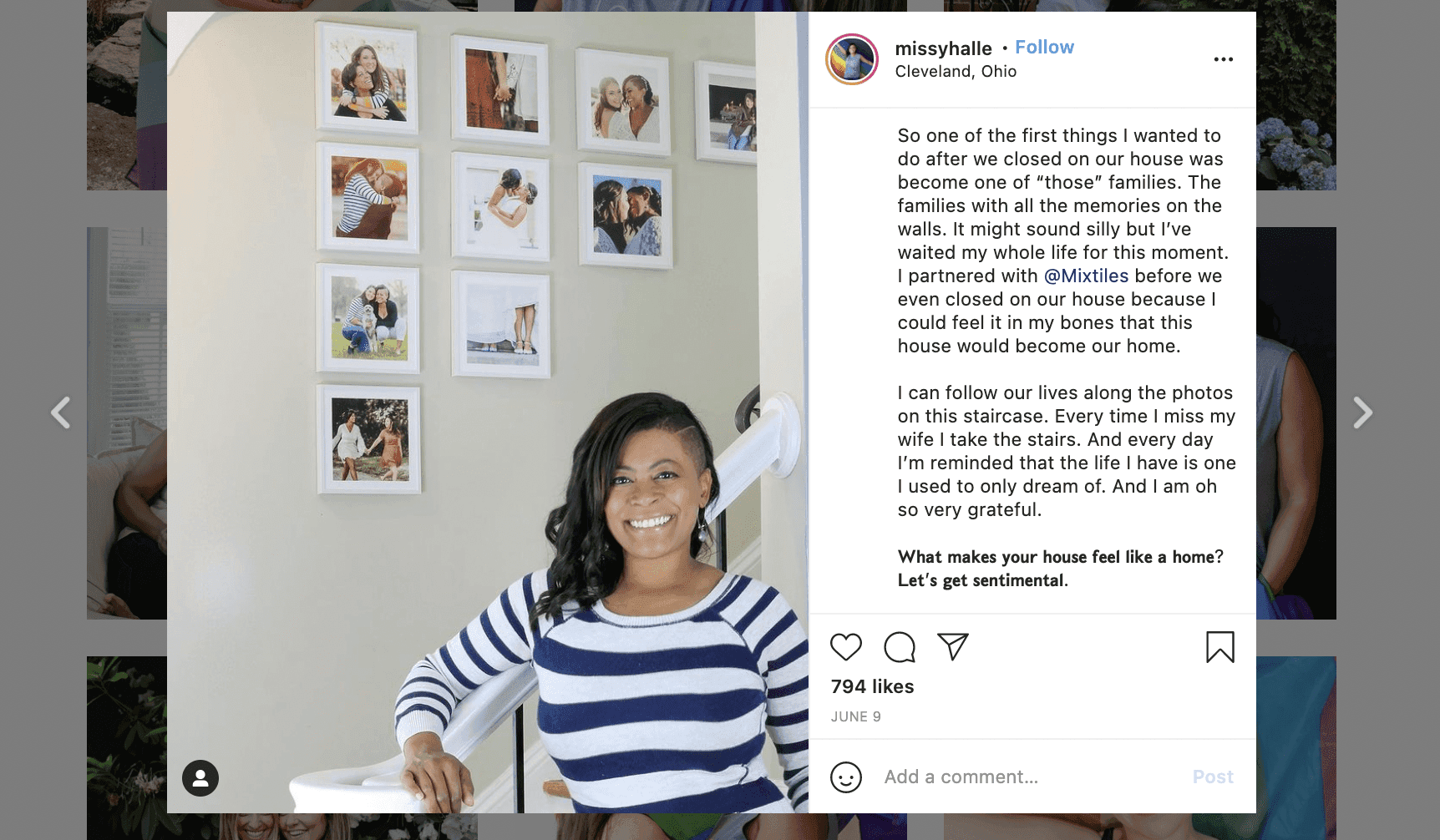
Mixtiles influencer @missyhalle shares her personal story and reasons for purchase, engaging her audience while showing her respect for the brand.
In much the same way, you need to respect the influencer for what they have achieved. They have grown an engaged audience. You want to leverage that audience, so be willing to accept their insights and creativity.
In other words, look at them as your co-equal. By working with them this way, you can ensure a mutually profitable partnership and build long-term relationships.
2. Ditch spreadsheets for an Influencer CRM
Streamline your influencer management strategy by utilizing an influencer marketing platform like Pixlee's [now Emplifi]. Not only does this allow you to create and manage relationships in one place, but you can also discover new potential influencers to partner with and keep track of every individual you have worked with for future reference. Additionally, Pixlee gives you the ability to collect, schedule, and publish influencer content like Instagram stories and posts directly within the platform.
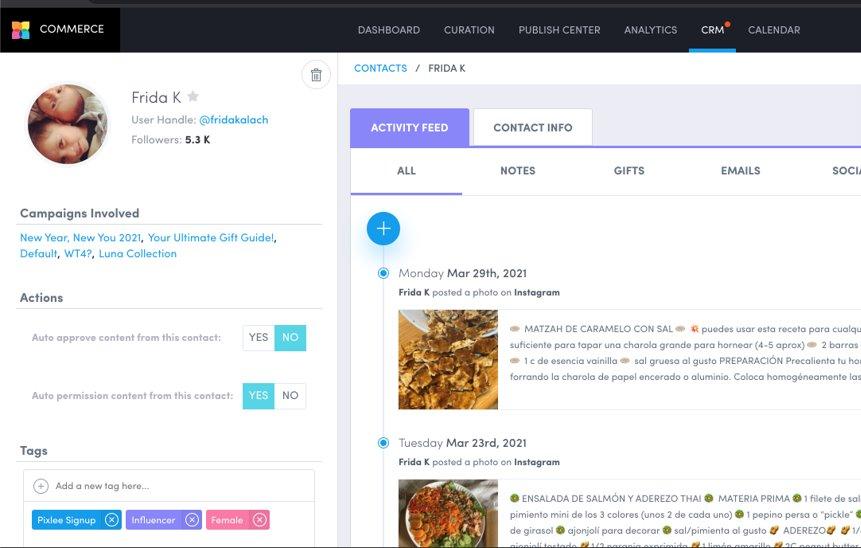
3. Give influencers creative freedom
Influencers lend your brand a unique voice that resonates with a fanbase they have carefully grown over time. Each creator's community of engaged users identifies with that unique voice of the influencer, so any campaign that sounds forced or branded will likely not appear genuine to those followers.
Give your influencers the "what" of your campaign message, but allow them creative liberty when crafting the "how." A winning influencer campaign is one that puts influencers on the center stage to showcase your brand's respect for the creator.
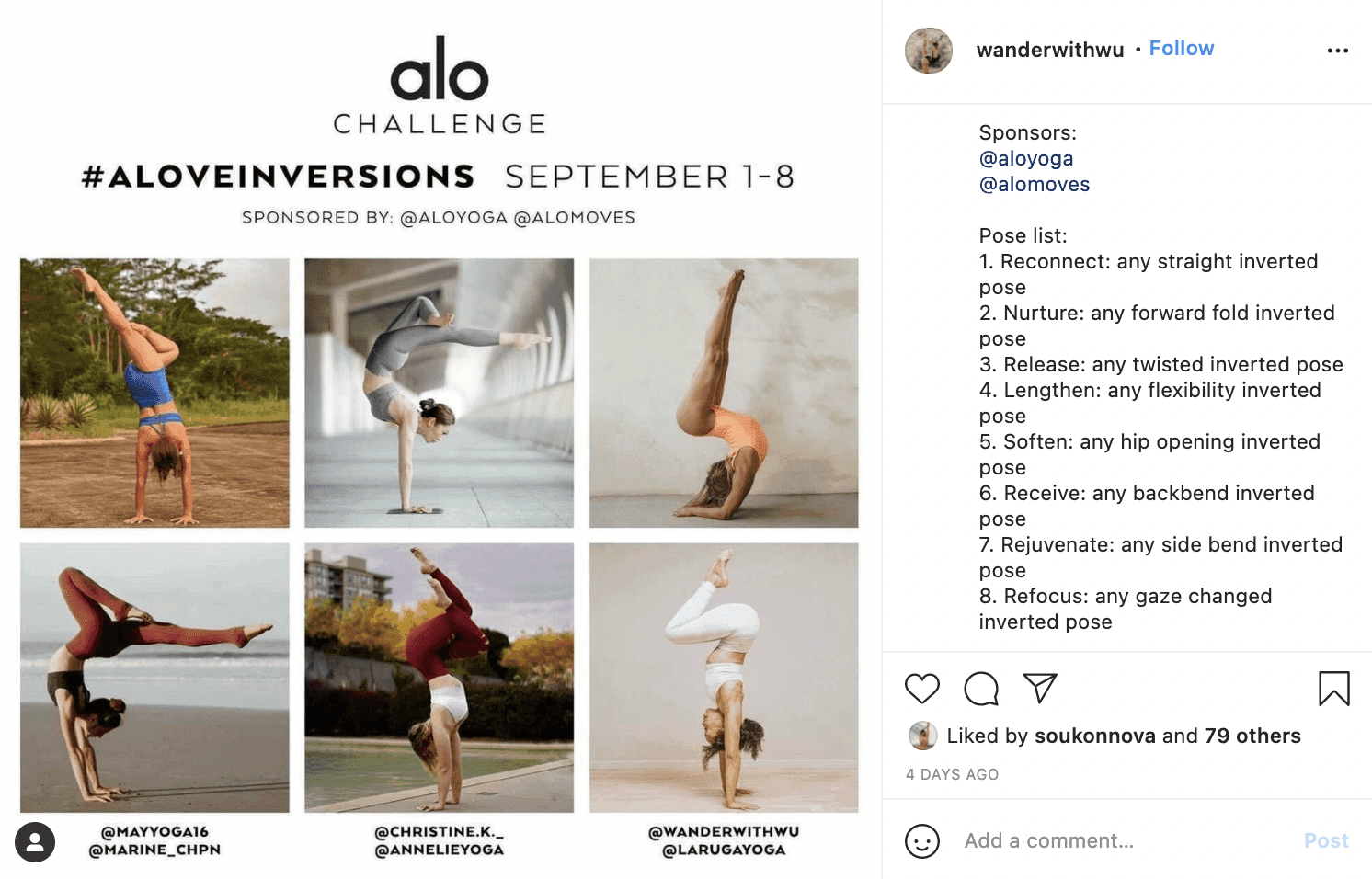
In this Instagram post, yogi @wanderwithwu shares Alo Yoga content while adding a unique pose list in the caption catered to her followers.
4. Define and measure campaign success
You should agree on a set of metrics you will measure before you launch your campaign. You might track the number of clicks, comments, conversions, or shares. This is where a CRM platform comes in handy yet again; keep track of top metrics from social engagement to ROI, and learn what's working best in your partnerships.
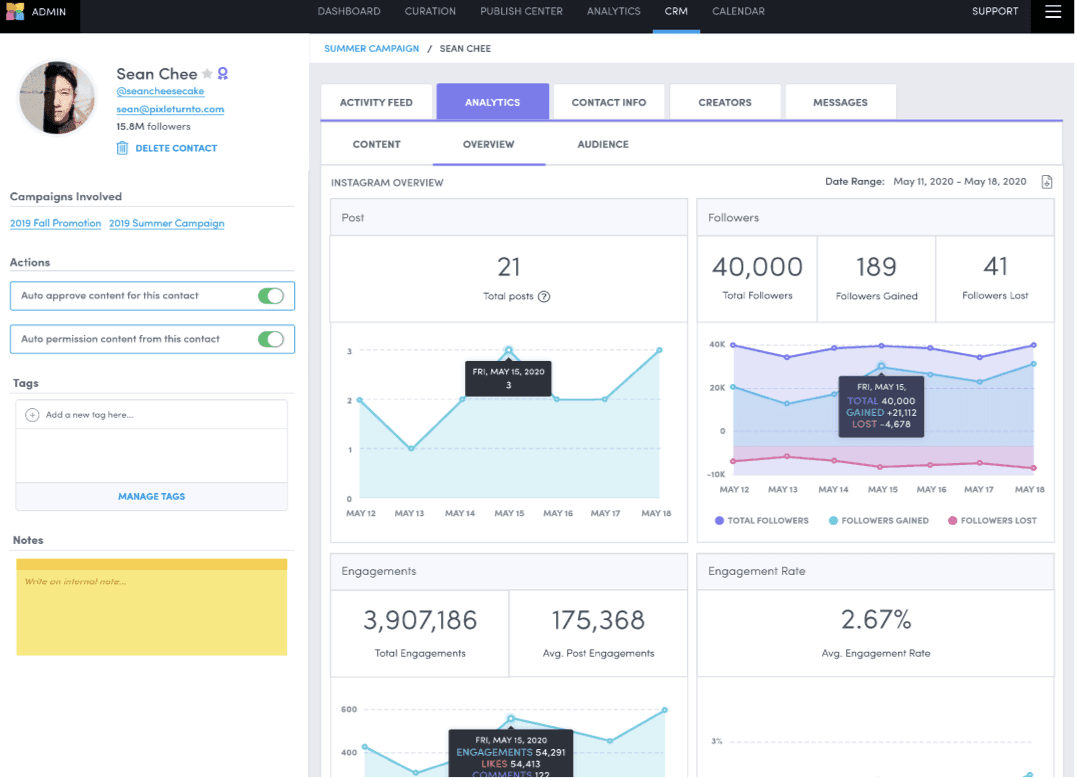
Once your campaign is launched, track the performance and the resulting engagement of each influencer. By tracking the performance over time, you'll see what kind of promotion and products are working best. That will help you identify which influencers you want to continue working with.
You should share the results of your campaign with influencers, especially if you're measuring metrics like sales, or subscribers. Influencers don't always get access to this data, and it's good for them to know how much value they bring to a business.
5. Compensate your influencers properly
Make sure you give your influencers what they're due. If that's monetary compensation, you should know the factors that influence influencer rates. Discuss a budget with your influencers before the start of the campaign.
There is, however, more than one way to go about compensation when it comes to influencer management (that is, assuming it was mutually agreed on).
You can simultaneously work with different things when working with them. For instance, instead of paying them cash, consider the following:
Free samples and giveaways if they already like/ buy your brand and then tagging them as natural brand ambassadors.
Special offers and insider access, in case you just want to get started with them, and they also show interest in your product.
Invites to special events
Also, share the results of your campaign with them. Tell them if they made you money or had the impact you desired. Let them know if they underperformed for improvement, and be willing to reward them if they over-delivered.In a nutshell, influencer management is about nurturing creator relationships the right way. It also involves setting clear expectations and rewards, letting their creative juices flow, and tracking campaign results. By applying these insights to your campaigns, you can achieve your desired campaign results. You can build long-term relationships with your influencers, too, who will, in the end, prove to be a business asset for you.
By Chris Norton, Founder of insight-led PR agency Prohibition, and Social Media Training, former University lecturer, author of "Share This Too" and listed in the UK's top 10 PR and social media bloggers.
Editor's Note: This article was originally published on pixlee.com. Any statistics or statements included in this article were current at the time of original publication.






![[Reporte] Panorama influencer marketing 2023](/_next/image?url=https%3A%2F%2Fimages.ctfassets.net%2Fcpumif18y1gd%2F5DkZONyzIfZIoYl2zsWtQC%2Fdbcbe77926fd8bed0163eea17940a018%2FEMP090-Influencer_Social_Trends_Report_Cover_-_LP_-_625_x_417.png&w=3840&q=75)

















